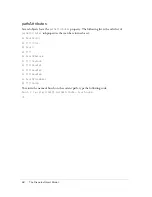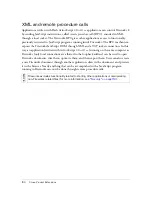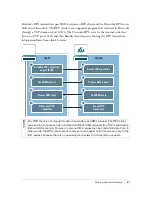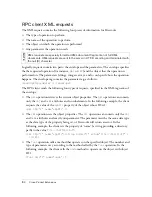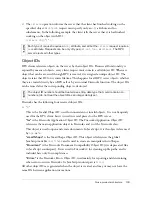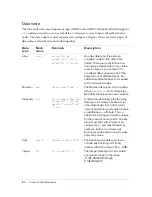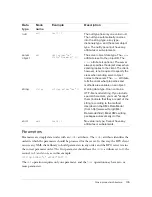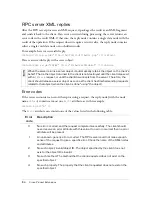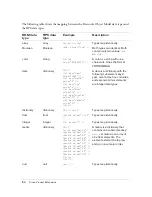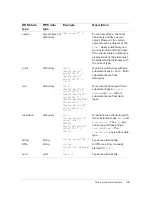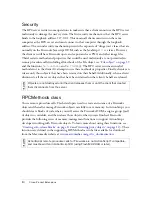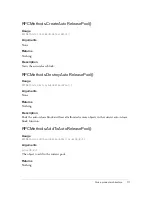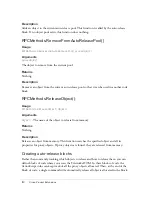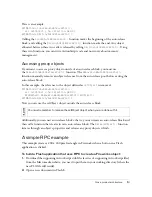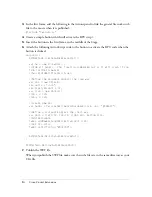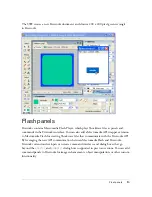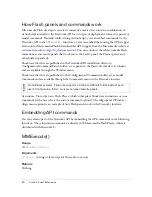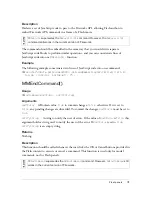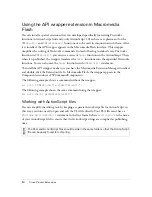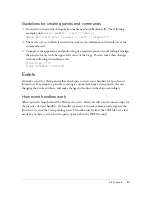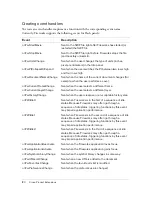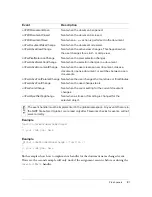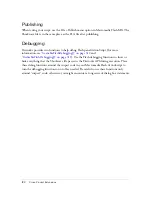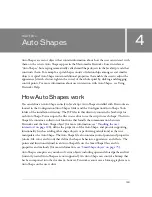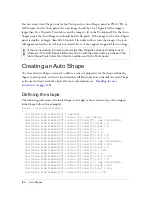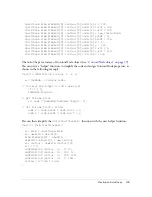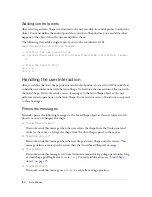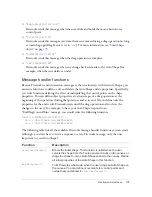
112
Cross-Product Extensions
Description
Adds an object to the current auto-release pool. This function is called by the auto-release
block. If no object pool exists, this function does nothing.
RPCMethods.RemoveFromAutoReleasePool()
Usage
RPCMethods.RemoveFromAutoReleasePool(
proxyObject
)
Arguments
proxyObject
The object to remove from the current pool.
Returns
Nothing.
Description
Removes an object from the current auto-release pool so that it can be used in another code
block.
RPCMethods.ReleaseObject()
Usage
RPCMethods.ReleaseObject(
Object
)
Arguments
Object
The name of the object to release from memory.
Returns
Nothing.
Description
Releases an object from memory. This function searches the specified object and all its
properties for proxy objects. If proxy objects are found, they are released from memory.
Creating auto-release blocks
Rather than constantly tracking which objects to release and how to release them, you can
define blocks of code where you access the Fireworks DOM. In these blocks of code, the
ActionScript stubs can keep track of all the proxy objects allocated. Then, at the end of the
block of code, a single command will automatically release all objects allocated in the block.
Summary of Contents for FIREWORKS 8-EXTENDING FIREWORKS
Page 1: ...Extending Fireworks ...
Page 4: ...4 Contents ...
Page 358: ...358 Fireworks JavaScript API ...
Page 372: ...372 Index ...

